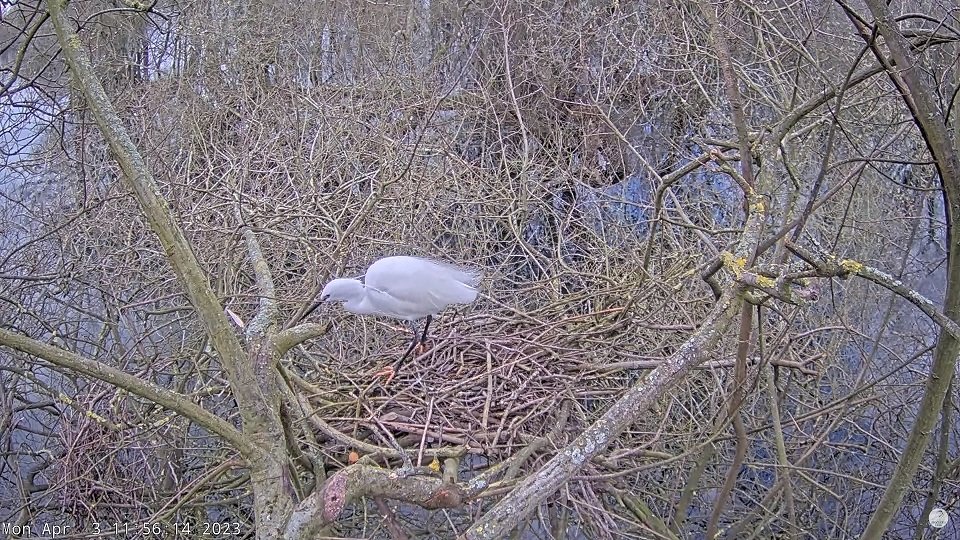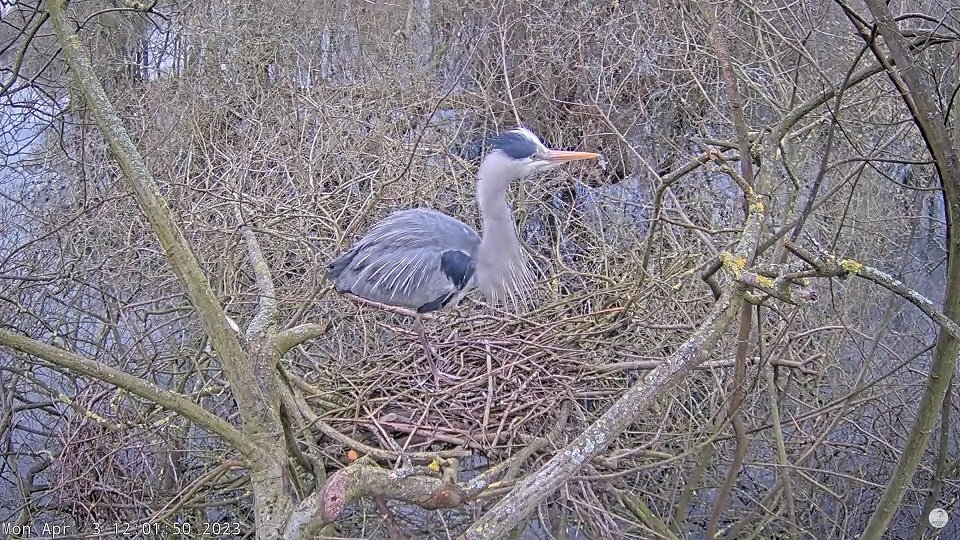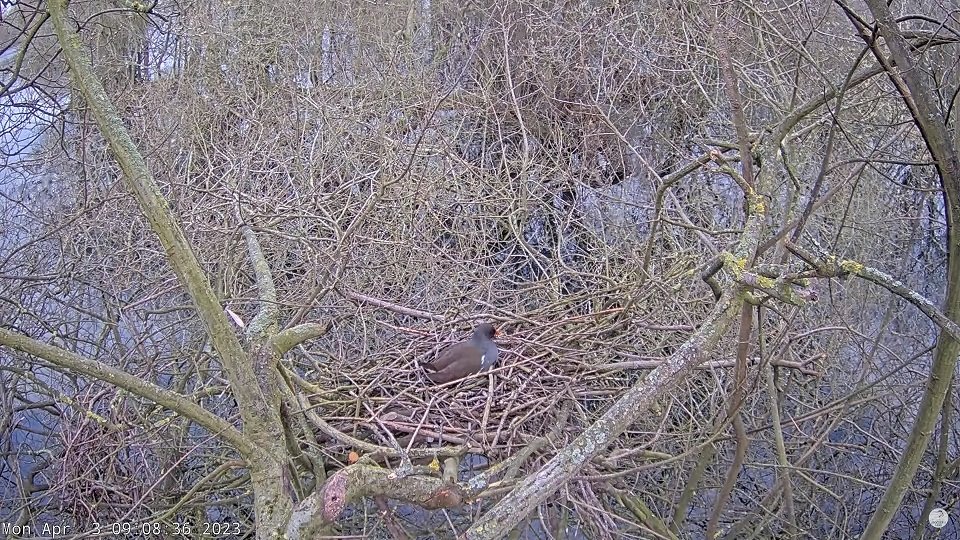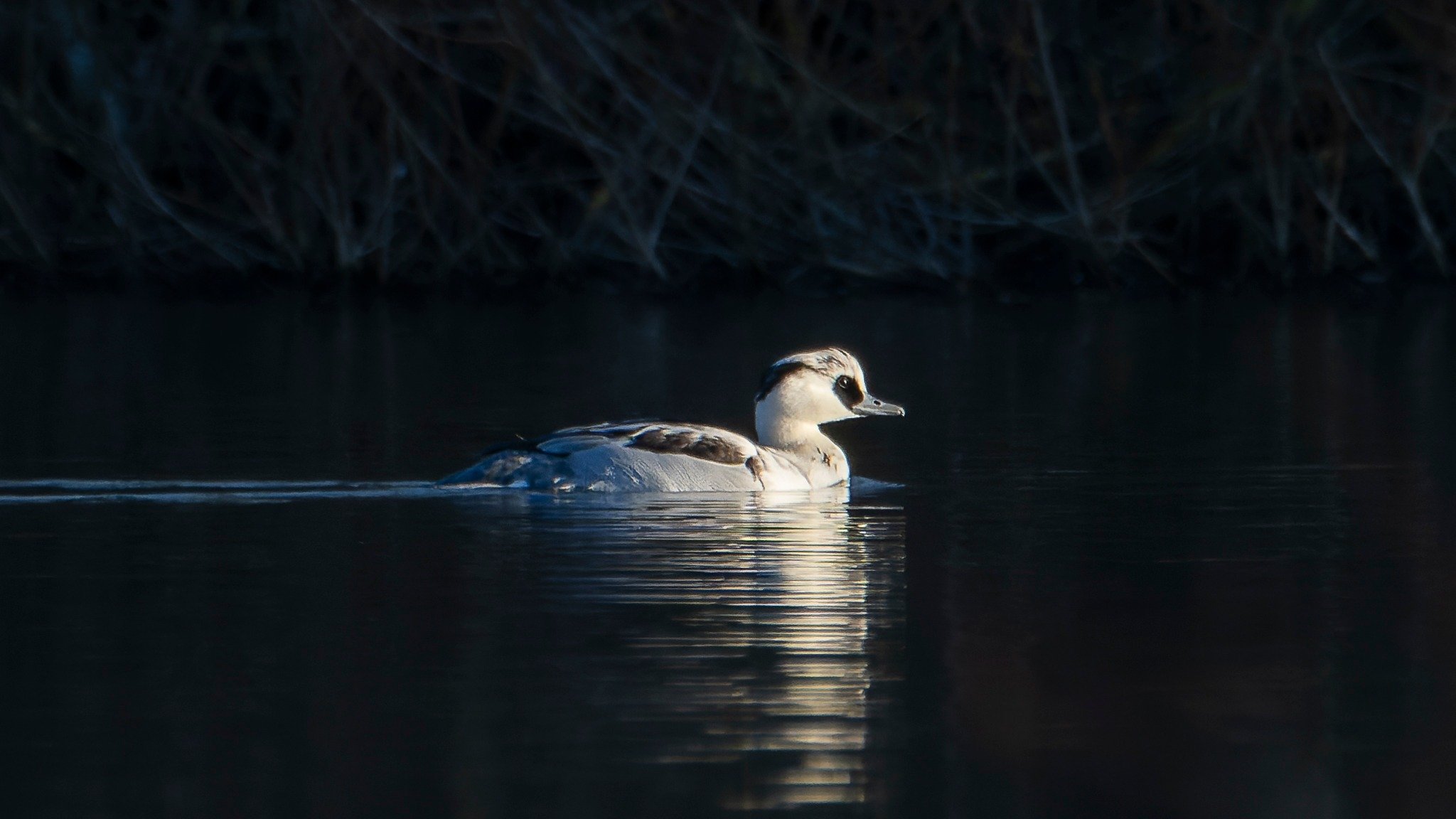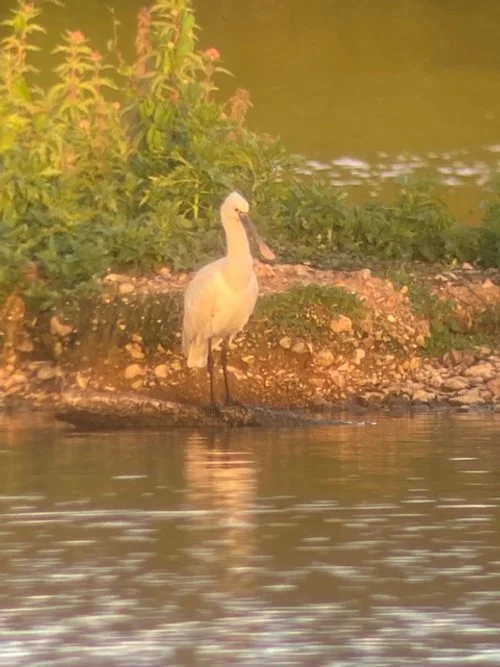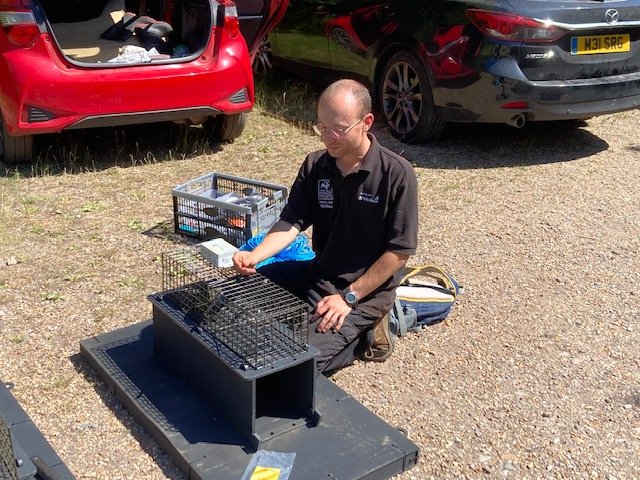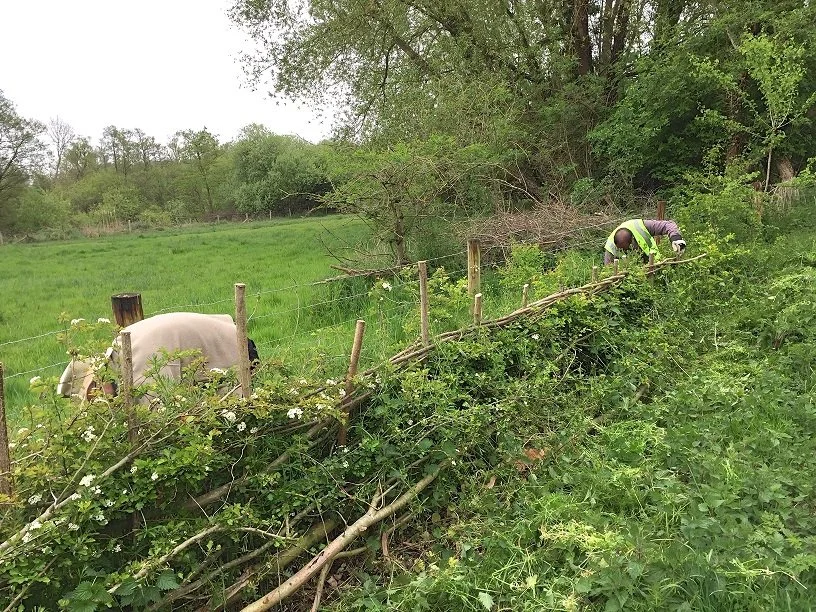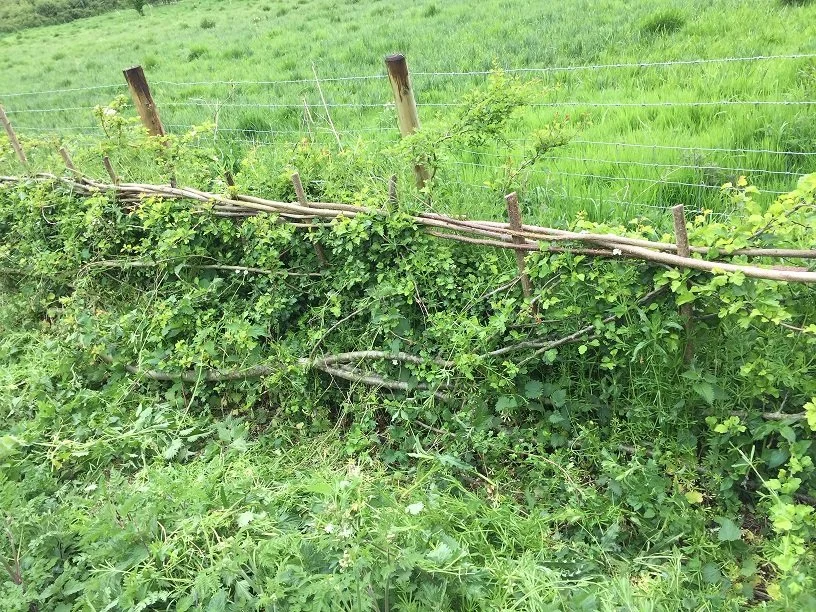Osprey Nest - Appeal for sticks
HMWT is on the point of refurbishing our Stocker’s Lake osprey nest. This work is likely to take place in October, but we need your help.
HMWT is on the point of refurbishing our Stocker’s Lake Osprey nest. The work will be funded by Affinity Water and completed with the help of Jason Fathers of Wildlife Windows, the company which has been supplying and maintaining our heron cameras. (Jason also built an Osprey nest in Dorset as featured on BBC Springwatch - live webcam link here - from which three chicks have successfully hatched this year.) The work on the Stocker’s Lake nest is likely to take place in October, but we need your help.
We need sticks to build the nest. We need not just any old sticks - we have lots of those! What we really want are Rhododendron sticks, mainly because they last a long time. So if you have a Rhododendron bush (or two) in need of pruning please hang on to the bits you cut off; especially and ideally if the sticks are a bit curved and as long as possible. (We can always cut them down.) If you can help please let Josh Kalms of HMWT know by emailing josh.kalms@hmwt.org. In due course Josh will then let you know when and where on site we will need the sticks.
Stocker’s Lake Osprey nest as viewed from the Heron Lookout
Osprey in flight
Background to Stocker’s Lake’s Osprey Platform and nest
Ospreys are impressive fish-eating birds of prey that spend the winter in West Africa and migrate north to breed. They used to be widely distributed in the UK but persecution led to their extinction in England in 1840 and in Scotland in 1916.
Concerted conservation effort has now allowed Ospreys to return to Scotland and more recently to parts of England, such as Rutland Water. The past couple of years have seen young Ospreys fledging on the south coast of England - the first time they have done so in 200 years. The use of artificial nesting platforms has been key in these successes.
In 2009 HMWT constructed a platform and artificial Osprey nest on an island at Stocker’s Lake. This is visible from several points along the South shore of the lake. Some Ospreys fly over the lake on migration as they head north in spring and south in late summer/autumn. It is hoped that the artificial nest will look appealing to a female seeking a nest site. Then the following spring we could see them taking a greater interest in the site. It may not happen for many years but as the UK's Osprey population continues to recover we might see them nesting once again in the Colne Valley.
Stocker’s Lake platform and nest under construction in 2009
Water Voles starting to be seen regularly
We are delighted to now regularly be receiving reports of Water Voles being sighted at the reserve.
We are delighted to now regularly be receiving reports of Water Voles being sighted at the reserve.
Water Vole at Stocker’s Lake reserve - 13th May 2023 © Michael Talbot
FoSL members who attended our 2023 AGM in late April were enthralled and educated as Josh Kalms of HMWT told us how these wonderful little creatures are now making a comeback, both nationally and locally, after years of drastic decline. This is all thanks to some energetic conservation work by HMWT and others, supported locally by FoSL. Josh also revealed how recent survey work conducted by a team of HMWT and FoSL volunteers has now confirmed the presence of water voles at the reserve.
Since then we have started to receive reports of actual sightings. On the afternoon of May 7th a water vole was seen in the ditch alongside the path that connects Stocker’s Lake with Springwell Lane and runs past Inns Lake. Then on the afternoon of May 13th one was sighted from the Colne side of the Stocker’s Lake circular path at its western end near the bridge to Inns Lake. Our thanks to Michael Talbot for reporting this second sighting and for sending us the associated, stunning photo which is included with this article.
To date survey efforts show that whilst water voles are present in the River Colne throughout the stretch running alongside Stocker’s Lake they are not currently present in the lake itself. It is of course hoped that this might change in the future.
If you would like to join the team of FoSL and HMWT volunteers who are currently regularly surveying for water voles at the lake please contact Josh Kalms. Training will be provided.
Leaking hide repaired
Thanks are due to Nick Gray and our lead Warden, Jack Westbrook. Together they recently spent an enjoyable if tiring day replacing the old leaky roof on Kingfisher Hide.
Thanks are due to Nick Gray and our lead Warden, Jack Westbrook. Together they recently spent an enjoyable if tiring day replacing the old leaky roof on Kingfisher Hide. These “before” and “after” photos testify to their efforts.
We are extremely grateful to our many volunteers who contribute literally hundreds of man hours each year during our monthly work parties or otherwise to perform maintenance work around the reserve . Without them a visit to Stocker’s Lake would be nothing like as pleasurable for the rest of us.
To learn more about recent work by our monthly volunteer work parties please refer to the recent event reports on our Previous Events page. And if you are interested in becoming involved in one of these in the future please contact our lead Warden, Jack Westbrook.
Livestreamed heronry nest site starting to attract interest
A nest in Stocker’s Lake Heronry from which we are streaming live pictures is starting to attract interest from both Little Egrets and Grey Herons.
A nest in Stocker’s Lake Heronry from which we are streaming live pictures is starting to attract interest from both Little Egrets and Grey Herons.
A new stream-able camera was installed in early February ahead of the breeding season. However the nest on which the camera is focussed, despite being used regularly in recent years, had attracted no interest before the end of March. But over the weekend of April 1st/2nd there were several visits by Little Egrets as well as by at least one Heron. So we are now hopeful that a full blown breeding attempt may soon commence by one or other species.
The images in the carousel below were all captured earlier today, Monday April 3rd. At different times they show an Egret, a Heron and even a Moorhen laying claim to the nest!
To view live images please click on the image below. If nothing of interest is showing try using the scroll bar at the bottom of the screen to wind back to earlier in the day. You can wind back up to 12 hours.
He's back!!
A rare and attractive visitor, the Smew, which was last seen on the lake in early December, appears to have returned.
Smew at Stocker’s Lake - December 2022 © Dave Watson
A rare and attractive visitor, the Smew, which was last seen on the lake in early December, has recently returned. At time of writing sightings have been reported on the last three consecutive days - February 2nd, 3rd and 4th.
The Smew is a small, attractive, diving duck which is a rare winter visitor to the UK. In a normal year only between 100 and 200 birds are reported nationally and before December it had been several years since one was last recorded at the lake. So this is exciting news which is attracting a number of birdwatchers hoping for a glimpse.
A Smew was also reported daily in December between 4th and 9th. But then a very cold spell of weather led to the lake becoming completely frozen over and this forced many of our visiting wildfowl, including the Smew, to move on for a while..
Reports this month indicate that the bird, a drake, is present again but currently mobile around the lake and proving elusive at times. On different days he has been seen from the paths on both the north and south sides of the lake as well as from Shoveler Hide.
To keep up to date with latest news of sightings, not only of the Smew but also of other birds currently being seen at the reserve, please monitor our sightings page.
Cold snap freezes lake almost completely
The current cold spell of weather has resulted in Stocker’s Lake now being almost completely frozen over. As a result most of our over-wintering wildfowl seem to have temporarily departed. On the plus side the lake is looking incredibly beautiful in the current still, frosty conditions.
The current cold spell of weather has resulted in Stocker’s Lake becoming almost completely frozen over. As a result most of our over-wintering wildfowl seem to have temporarily departed. At time of writing only a small patch of water, in the SE corner of the lake adjacent to Shoveler hide, remains uncovered with ice. Here a reasonable number of waterbirds remain, mostly Shoveler and Great Crested Grebe. But sadly on the remainder of the lake all that currently can be seen in terms of birdlife is not much more than the occasional gull or swan standing on ice.
On the plus side numerous smaller birds such as tits and redwings can still be seen moving around the shore. Also the lake is looking incredibly beautiful in the current still and frosty conditions, as the accompanying slideshow testifies. So it remains very well worth a visit!
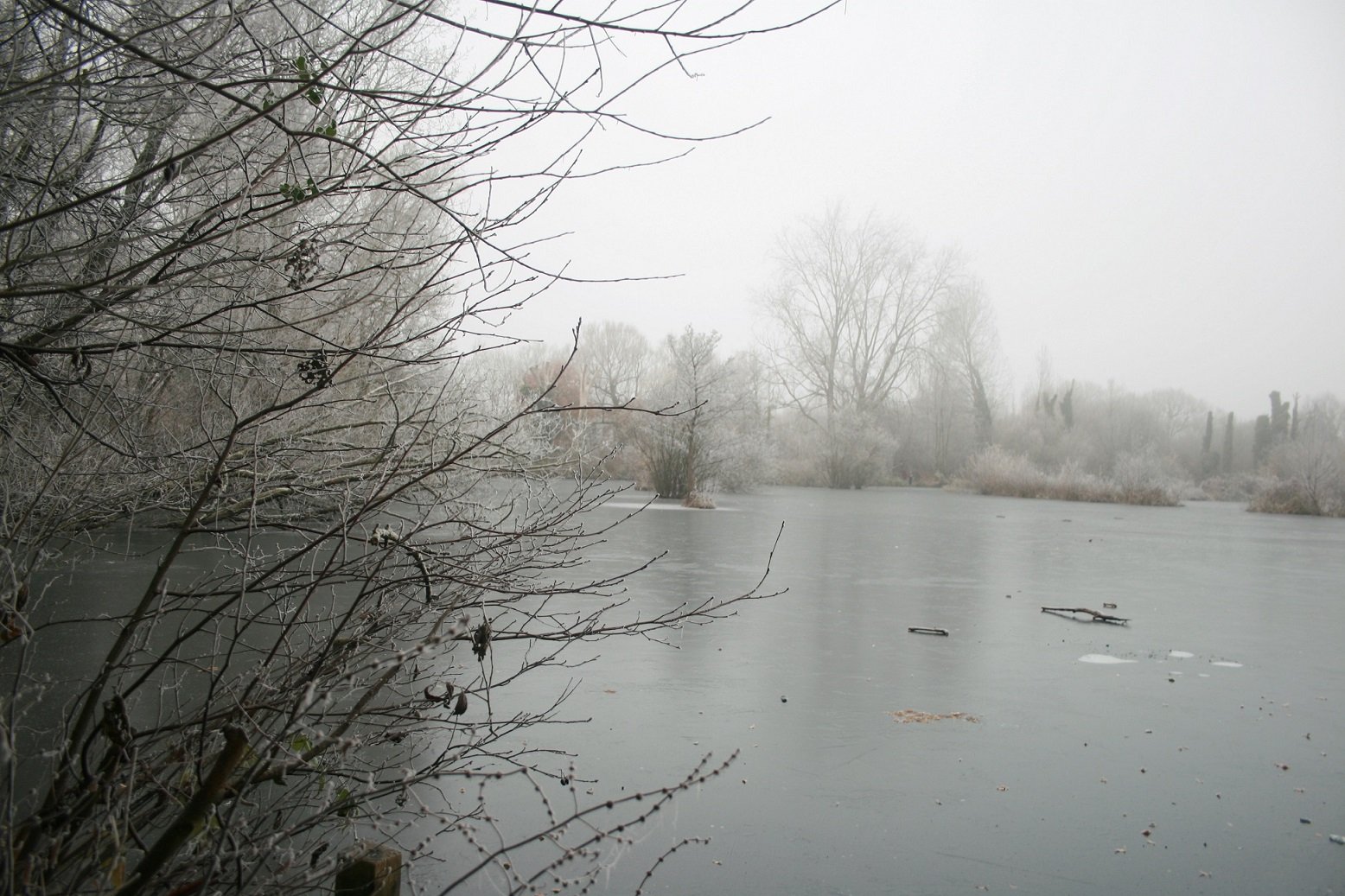
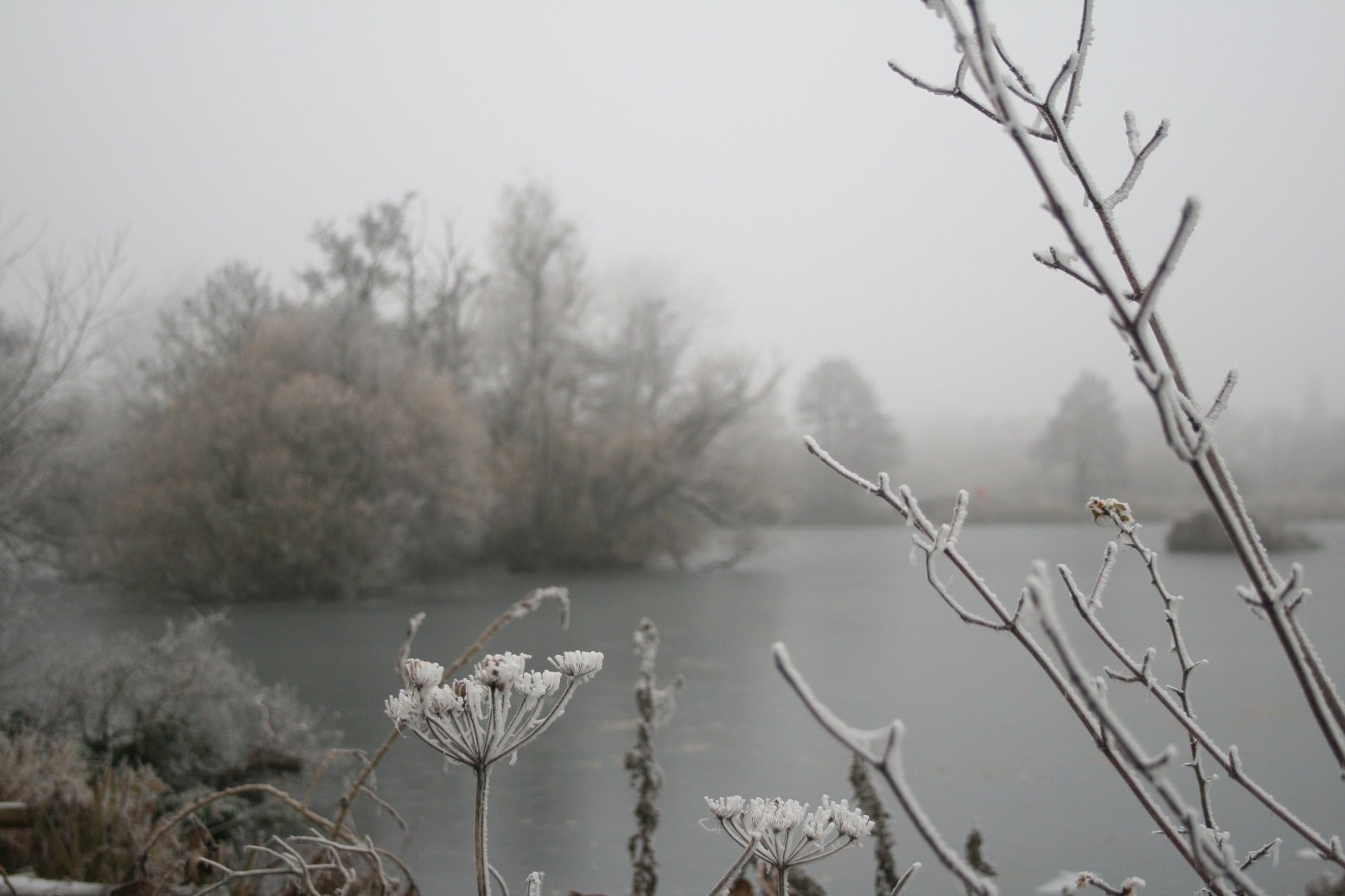
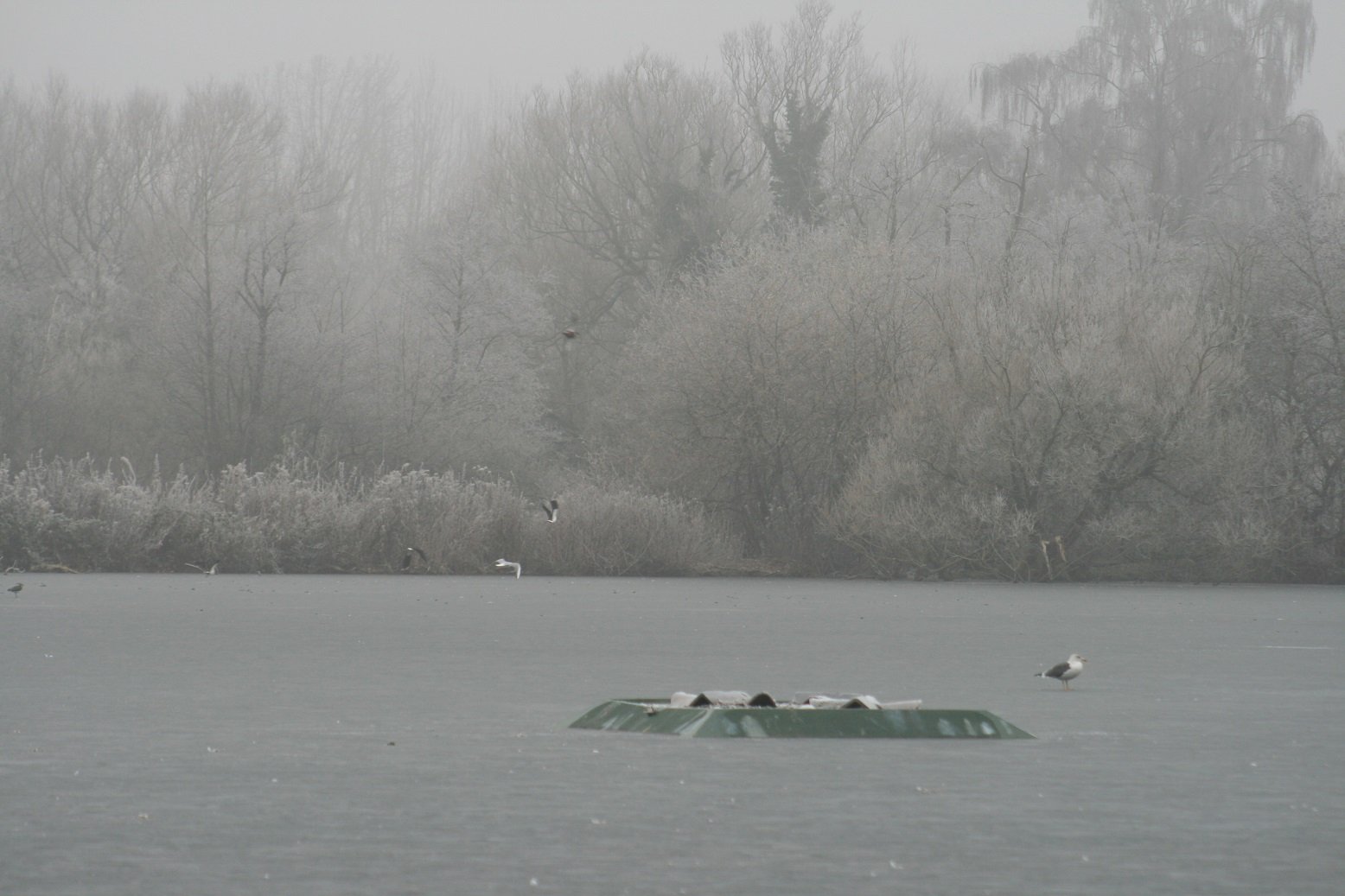
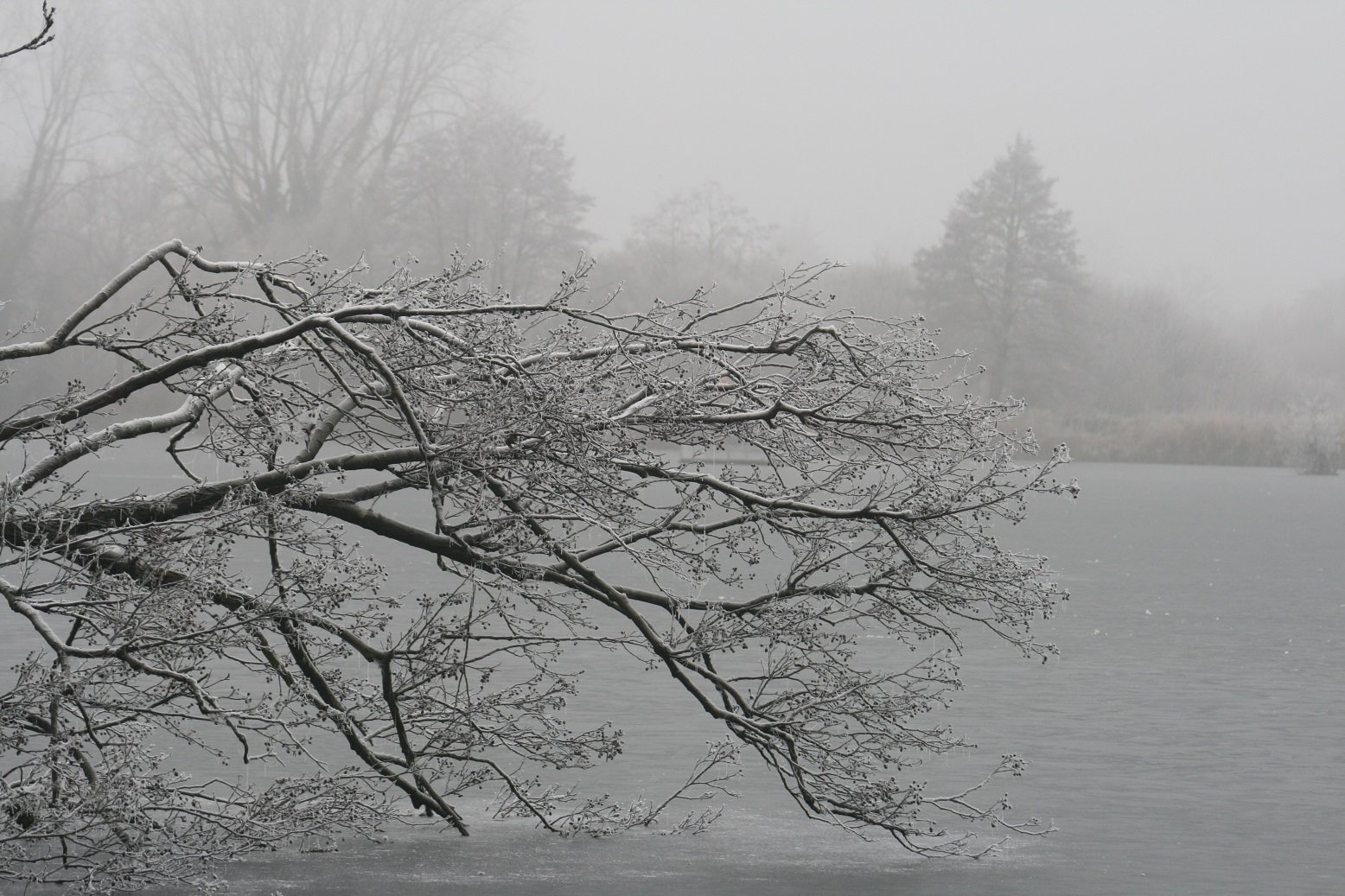
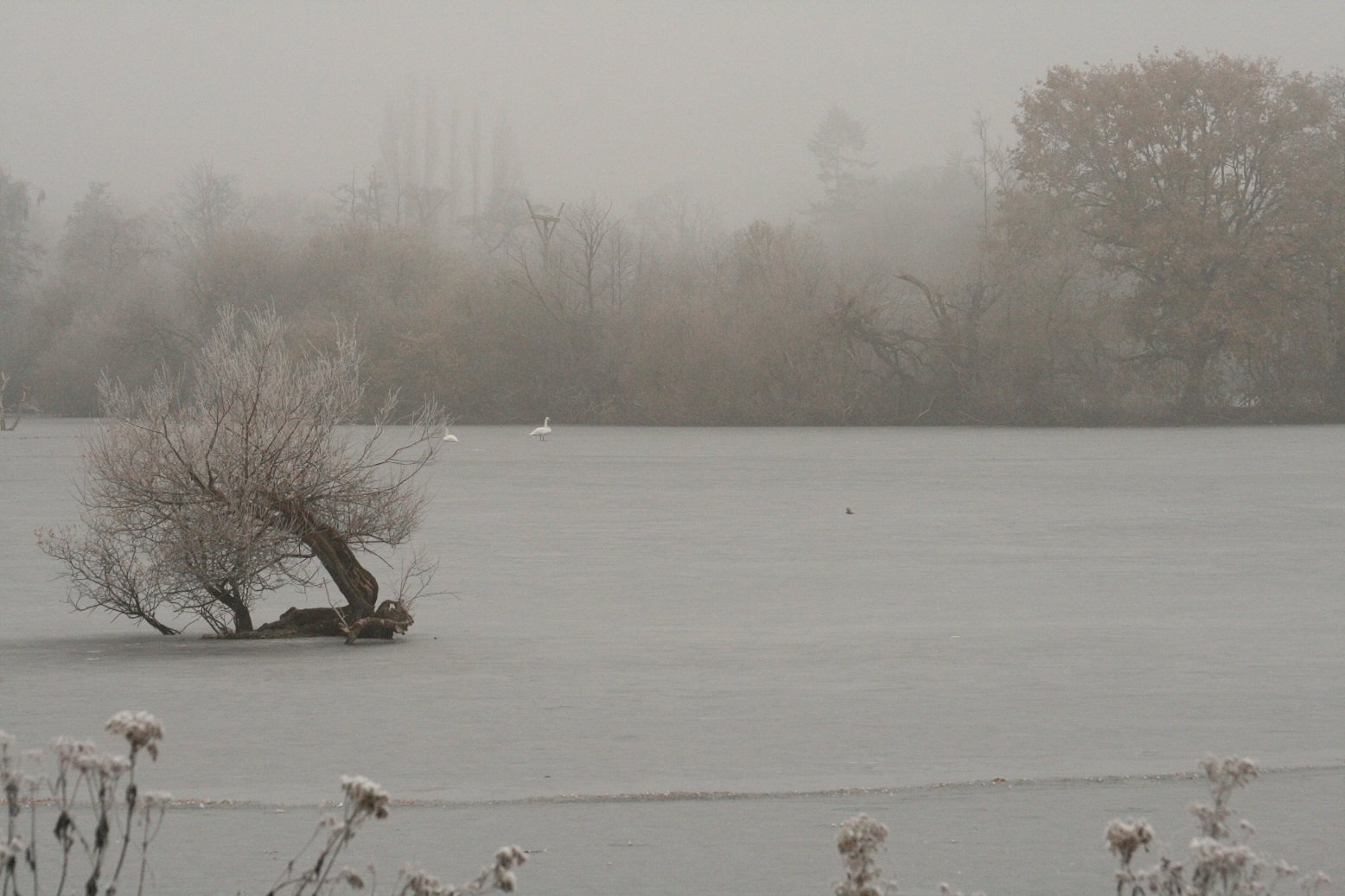
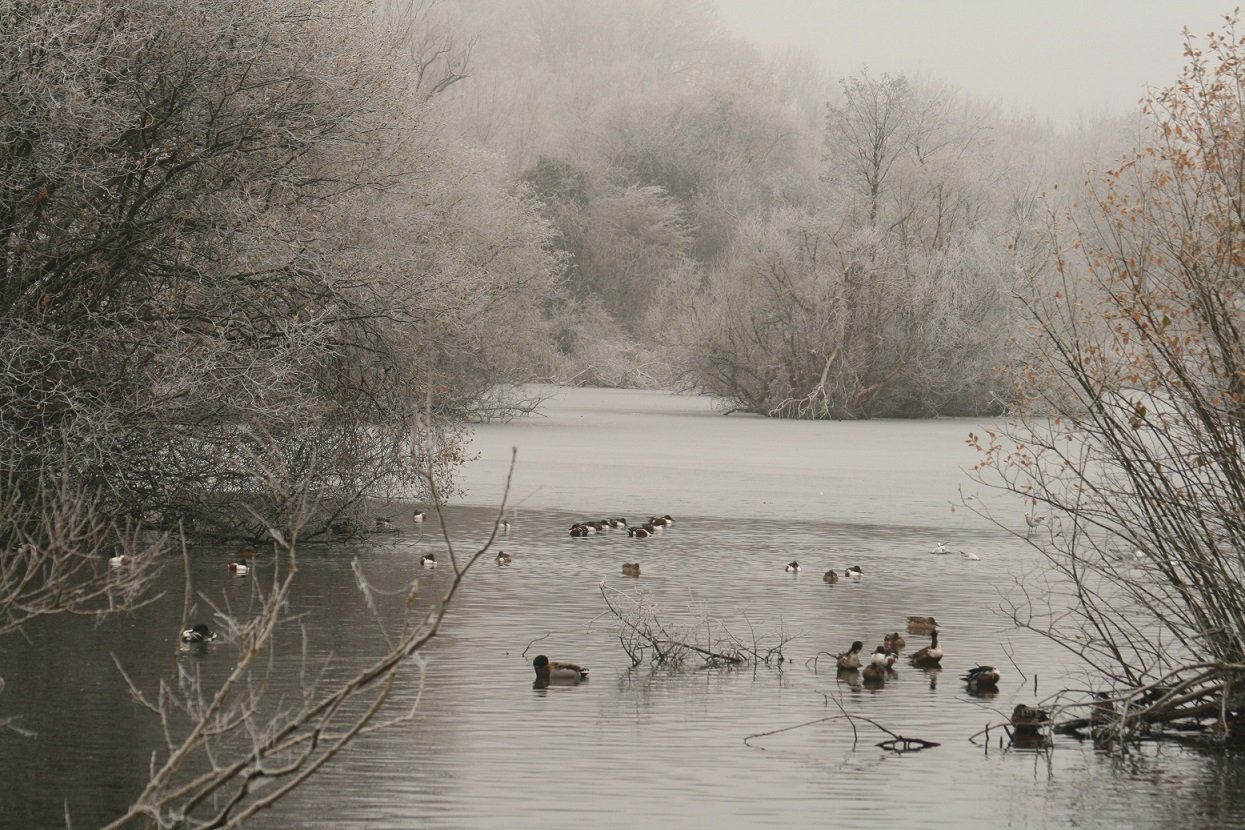
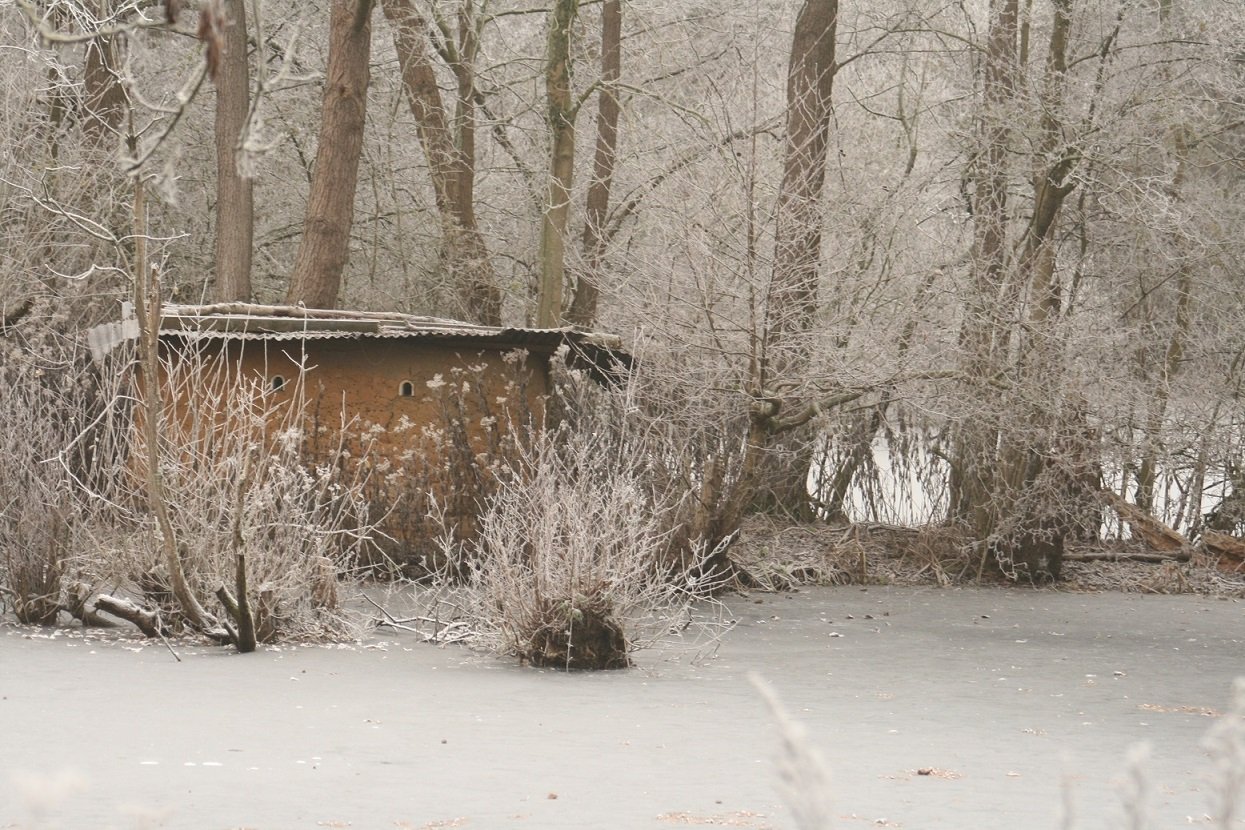
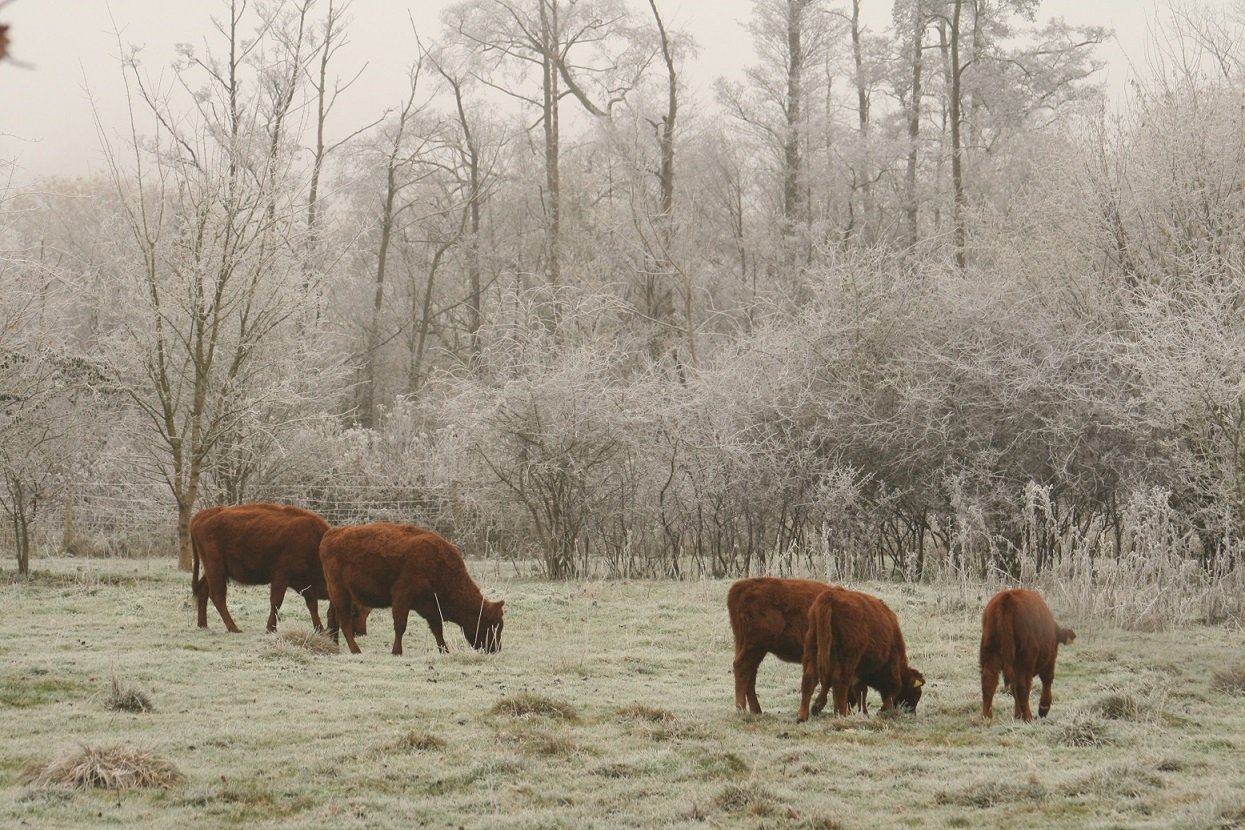
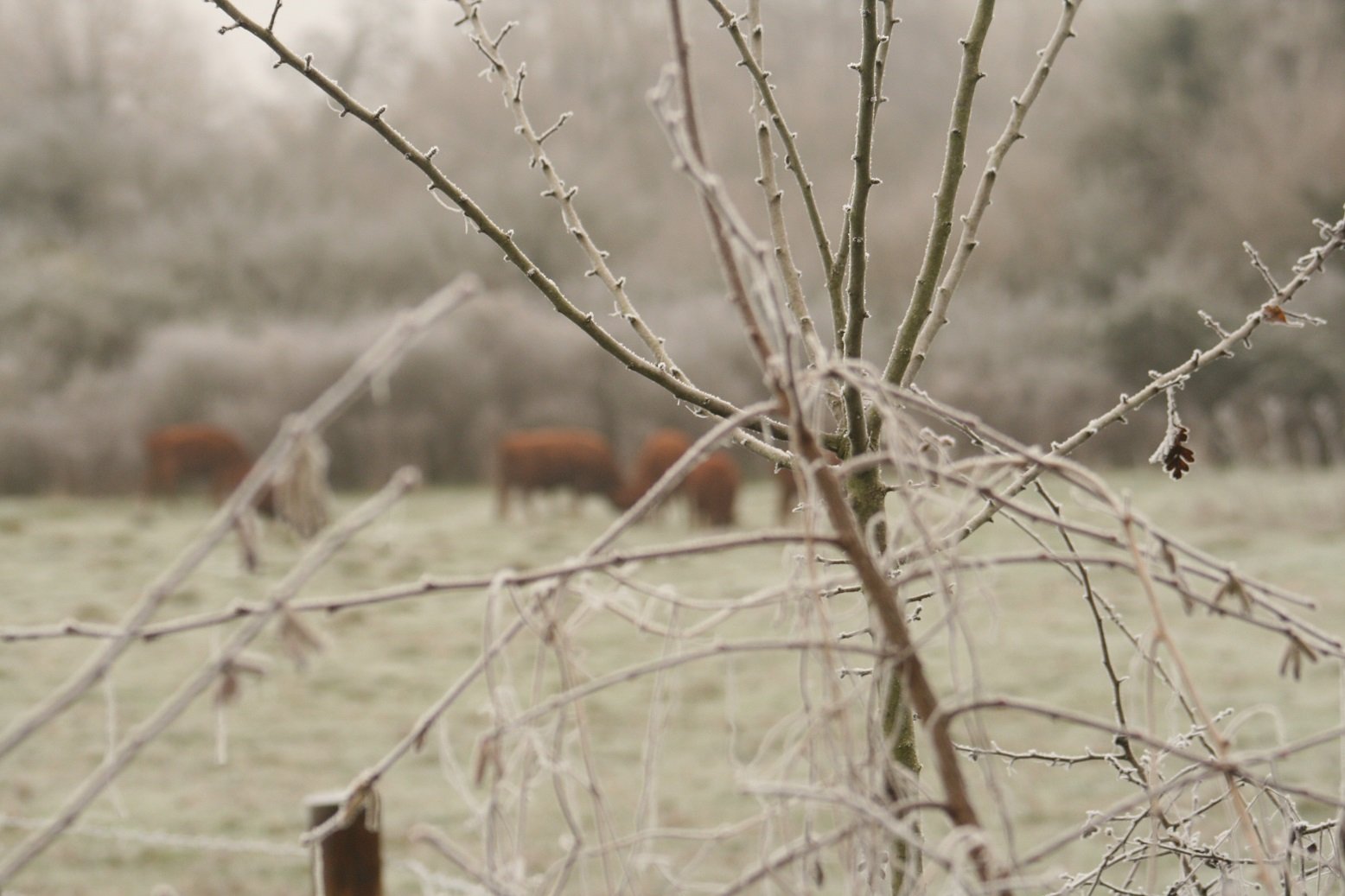
Rare Smew currently being seen on the lake
A rare winter visitor, the Smew, is currently being seen regularly on the lake.
A rare visitor, the Smew, is currently being seen regularly on the lake. The Smew is a small, attractive, diving duck which is a rare winter visitor to the UK. In a normal year only between 100 and 200 birds are reported nationally and it is several years since one was last recorded at the lake. So the news that one has now been seen multiple times for four days in a row (starting on Sunday December 4th) is very exciting. Plenty of birdwatchers hoping for a glimpse have already been attracted to the lake as a result.
Smew at Stocker’s Lake - 07 12 22 © Dave Watson
To date all reports of the bird have been of it on the lake towards its west end moving around between islands. It has been observed a number of times from Tern Hide, from the leaning post at the lake’s west end and from the west end of the riverside path.
To keep up to date with latest news not only of the Smew but also of other birds currently being seen at the reserve please monitor our sightings page.
2022 Butterfly numbers up but disappointing again
As usual a team of FoSL observers monitored the reserve’s butterflies in 2022. Given the hot, dry weather during parts of the summer, which would normally be expected to be good for butterflies, 2022 must be classed as another disappointing year.
As usual a team of FoSL observers monitored the reserve’s butterflies in 2022. Given the hot, dry weather during parts of the summer, which would normally be expected to be good for butterflies, 2022 must be classed as another disappointing year even though the total number recorded (547) was better than both 2021 (446) and covid curtailed 2020 (518).
Our full FoSL Butterflies report 2022 can be viewed or downloaded from here. Our thanks to Cliff Buckton and team for conducting the survey and for producing this report. Earlier reports covering each calendar year back to 2014 can be viewed or downloaded from our Sightings Page.
Avian Flu October Update
Update 3rd October
Dead birds are still being recorded from the lake. On Saturday twelve birds (mainly ducks, geese and coot) were collected. Each bird is being logged with DEFRA and then incinerated after about a week if birds are not requested for testing.
Thanks to everyone who is taking the time to send in records.
Update 3rd October 2022
Dead birds are still being recorded from the lake. On Saturday twelve birds (mainly ducks, geese and coot) were collected. Each bird is being logged with DEFRA and then incinerated after about a week if birds are not requested for testing.
Thanks to everyone who is taking the time to send in records.
Update 7th September:
For the duration of this outbreak we have discontinued the use of our bird feeders. This is because feeders can potentially act as a hub for transmission of the disease
29th August
We regret to say that we are currently experiencing an outbreak of Avian Flu at Stocker’s Lake. Several dead birds have recently been found. To help us manage things, and until further notice, please do the following whenever you visit the lake…….
Make sure you keep your dog (and yourself!) out of the water
If you come across a dead bird please do not touch it
Instead please report it by emailing HMWT at birdflu@hmwt.org. If you know the species of bird please state this in your email. Please also describe the number of birds involved, their condition and, as accurately as you can, their location. (What3 Words is great for this.)
To avoid spreading the disease please clean your footwear when you get home
For further information, including how to report a dead bird found elsewhere, please refer to HMWT’s Avian Flu advice webpage.
We will keep you updated via this website.
Wildflowers identified around Stocker's Lake in 2022
We have been maintaining a list of all wildflowers seen at the lake since the start of 2022 and would welcome any additional findings from members as they walk around Stocker’s Lake.
You can download from here a list of all wildflowers identified around Stocker’s Lake in 2022.
We will continue to add to the list over the remainder of the year. We welcome any additional findings from members as they walk around Stocker’s Lake. Please pass on your findings to Linda Ascroft via webmaster@fosl.org.uk mentioning where you found it (perhaps using What3Words?), so that we can verify and add to the list. Plus a photo would be great.
With our thanks.
Wanted: Wildflower Surveyors
We are looking for volunteers with a reasonable/some knowledge of wildflowers (and grasses) to help monitor anticipated changes to wildflower populations on our cattle meadows
FoSL has begun a monthly survey of the wildflowers on the cattle meadows with a view to keeping records to note how the wildflower population hopefully increases as the years go by due to the presence of the cattle .
We are looking for volunteers with a reasonable/some knowledge of wildflowers (and grasses) to help with this exciting project.
If interested please contact Linda Ascroft, Events Organiser by emailing the FoSL webmaster.
Rare Spoonbill seen at Stocker's Lake
A rare and spectacular bird, the aptly named Spoonbill, was seen at Stocker’s Lake on Friday July 1st.
A rare and spectacular bird, the aptly named Spoonbill, was seen at Stocker’s Lake on Friday July 1st. There have only ever been fewer than 20 records of Spoonbills across Herts as a whole. We think this is the first ever record for Stocker’s Lake.
The bird was first seen from Tern Hide in the early evening and was later spotted in a slightly different position before it flew off in the direction of Inns and Springwell Lakes at around 9.10pm. Hopefully it will return over the following days allowing others the chance to see it.
Spoonbills are large wading birds, close to herons in size, with an unmistakable spatula-shaped bill which, when feeding, they sweep from side to side in shallow water to capture insect lavae, small fish etc. Spoonbills are rare across the whole of the UK although in recent years a breeding population has established itself in Norfolk and this is leading to them becoming seen a little more frequently in neighbouring areas.
The images in the gallery below were taken at around 9pm on July 1st from the path along the River Colne. The bird was on a small island part way across the lake towards Tern Hide.
To keep abreast of all interesting sightings at the lake please regularly visit our Sightings page.
Mink Surveillance stepped up
A joint HMWT/FoSL team led by Josh Kalms of HMWT has this week installed two new Mink Surveillance rafts on Stocker’s Lake.
A joint HMWT/FoSL team led by Josh Kalms of HMWT has this week installed two new Mink rafts on Stocker’s Lake. This follows the presence of Mink having recently been detected.
Mink surveillance rafts have been deployed on the lake for several years. The older rafts detect Mink presence by capturing footprints and Mink footprints have now been found twice since December 2021. The new rafts will instead humanely capture the animals whilst simultaneously sending text alerts to inform the team so that they can respond quickly. These are two of 70 rafts that the Trust is currently positioning around the county.
Josh Kalms demonstrates the new raft capabilities
American Mink is a non-native, invasive and predatory species which, when present, can cause great damage to our native wildlife. So it is important to ensure that they don’t re-establish themselves on the lake, especially now that a long awaited return to the lake of our native Water Vole is strongly suspected. (HMWT will be seeking to confirm this by means of a survey this coming autumn.) Water vole populations have largely disappeared across the UK in recent years with mink predation playing a major role in their decline.
Josh wishes to thank our FoSL volunteers who monitor the rafts.
Fun footage of young volunteers during a FoSL work party
Some fun footage has emerged of young people as they volunteered with FoSL this past winter whilst completing the community service element of their Bronze Duke of Edinburgh's Award.
Some fun footage has emerged of young people as they volunteered with FoSL this past winter whilst completing the community service element of their Bronze Duke of Edinburgh's Award.
Charlie, Hannah, Hattie, Mimi, Stanley and William worked on a wide variety of tasks including the renovation of a number of hides and painting preservative on fence posts. However they also enjoyed some fun moments during their breaks. Click on the short, one minute video below to see a few of them larking about with a wheelbarrow back in February.
Hedge Laying efforts starting to reap benefits
Over the winter our monthly work parties spent time layering hedges around some of the cattle meadows. Hedge layering is is an ancient and environmentally friendly art, not least because the dense hedges it creates provide perfect nesting habitat for robins and wrens.
Over the winter our monthly work parties spent time layering hedges around some of the lake’s cattle meadows. Hedge layering is is an art that is both ancient and environmentally friendly, not least because the dense hedges it creates provide a corridor / habitat for wildlife (small mammals, birds and butterflies).
We are currently very pleased to see how, as these photos show, some of the hedges are already leafing out very nicely following that earlier work.
See our Previous Events page to learn more about work done by our recent work parties . And if you are interested in joining one please email our lead warden, Jack Westbrook (warden@fosl.org.uk) in the first instance.
Annual butterfly survey recorders needed
Is anyone interested in helping with the annual Stocker’s Lake butterfly survey? At present, there are three people in the recording team but it would be good to have a few more volunteers.
What does it involve?
Is anyone interested in helping with the annual Stocker’s Lake butterfly survey? At present, there are three people in the recording team but it would be good to have a few more volunteers.
What does it involve?
The survey involves walking around the lake, usually once a month - it takes about an hour - and recording the number and species of butterfly seen in each section of the route. Simple weather data is also recorded. Your results are then entered directly onto the UK Butterfly Monitoring Society website which collates the totals and produces an annual survey.
The United Kingdom Butterfly Monitoring Scheme (UKBMS) is one of the longest running insect monitoring schemes in the world. The scheme began in 1976 and now records data on over 2,000 sites per year; incorporating butterfly transects, the Wider Countryside Butterfly Survey (WCBS), and timed-counts. The resulting UKBMS dataset is one of the most important resources for understanding changes in insect populations.
The UKBMS is based on a well-established and enjoyable recording method and has produced important insights into almost all aspects of butterfly ecology. To get an idea of how our Stocker’s Lake Survey please visit our Sightings page from which you can download all of our annual butterfly survey reports dating back to 2014.
If you are still interested, please email Barbara James (barbara.james5@btopenworld.com) who can give you further information.
Young Volunteers support FoSL
The number of FoSL volunteers has been bolstered over the last six months by a number of young people who have been completing the community service element of their Bronze Duke of Edinburgh's Award. Charlie, Hannah, Hattie, Mimi, Stanley and William have worked on a wide variety of tasks including the renovation of a number of the hides and painting preservative on fence posts.
The number of FoSL volunteers has been bolstered over the last six months by a number of young people who have been completing the community service element of their Bronze Duke of Edinburgh's Award. Charlie, Hannah, Hattie, Mimi, Stanley and William have worked on a wide variety of tasks including the renovation of a number of hides and painting preservative on fence posts.
Most recently they helped support The Great British Spring Clean (accompaned by Bob Sherren, one of our Assistant Wardens) to pick up litter on the reserve and the Aquadrome. This was a joint venture with Sustainable Three Rivers and proved to be a valuable exercise in reducing the amount of mess left by human visitors and so avoid it being ingested by wildlife.
A number of passers-by were very complimentary about their efforts whilst commiserating that the task is unfortunately a necessary one.
If any members are interested in joining other volunteers on our monthly work parties or know of any young people who also want to undertake a community service project please email warden@fosl.org.uk.
Spectacular footage of our 2022 breeding Herons and Little Egrets
Stocker’s Lake hosts the largest heronry in Hertfordshire with 20+ pairs of Herons breeding annually. In recent years they have been joined by Little Egrets. See below for a spectacular video tracking the birds’ breeding progress so far in 2022.
Stocker’s Lake hosts the largest heronry in Hertfordshire with 20+ pairs of Herons breeding annually. In recent years they have been joined by Little Egrets.
See below for a spectacular video tracking the birds’ breeding progress so far in 2022. The film was compiled from footage captured between January and early April by FoSL’s remotely controlled cameras installed on one of the islands used by the herons.
Keep track of the herons’ continued progress by visiting our 2022 Season playlist on our FoSL YouTube channel. We shall continue to add videos to this as the season progresses.
Heron nesting underway
Already our resident Herons have started their 2022 breeding efforts by occupying nests. These pictures were taken on January 28th using one of FoSL’s offshore cameras. You might be able to spot up to 13 birds in this wide angle image.
Already our resident Herons have started their 2022 breeding efforts by occupying nests. These pictures were taken on January 28th using one of FoSL’s offshore cameras. You might be able to spot up to 13 birds in the wide angle image below.
Stocker’s Lake is home to the largest heronry in Hertfordshire. Most years up to 20 pairs breed in trees on the lake’s islands. In 2018 FoSL installed a couple of solar-powered offshore cameras on one of those islands. Using those we plan to post further stills plus video footage as the 2022 season progresses.
To view videos of breeding Herons and Little Egrets in previous years please visit our FoSL YouTube channel.
Also watch out for our Heron and Egret Watch event on March 27th when you will be able to see the breeding activity live for yourself.
Kestrel Nestbox installed
Earlier this month we had a Kestrel nestbox installed between the pumping station close to Kingfisher Hide and the lake. Good views of the box (and therefore hopefully in due course of breeding Kestrels) can be had from the area in front of the pumping station looking East back towards Stockers House.
Earlier this month we had a Kestrel nestbox installed between the pumping station close to Kingfisher Hide and the lake. Good views of the box (and therefore hopefully in due course of breeding Kestrels) can be had from the area in front of the pumping station looking East back towards Stockers House.
You may recall that Stocker’s Lake hosted a Kestrel box once before. The previous box was visible from Kingfisher Hide and was used successfully by breeding Kestrels for several years. Unfortunately the tree on which it was situated blew down in a storm in 2012 and there was no suitable alternate site in that particular area. So we have been without one since then until now.
Fledged Kestrels viewed from Kingfisher Hide - July 2011
New Kestrel Box Installation - Jan 2022
Because we know that Kestrels have previously successfully used a nestbox on the reserve we are cautiously optimistic that they will do so again. Should the new box be used by the birds in 2022 we shall consider installing an observation camera in it in time for the 2023 season so that we might capture, and perhaps even livestream, images of breeding birds.








